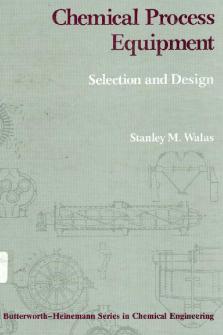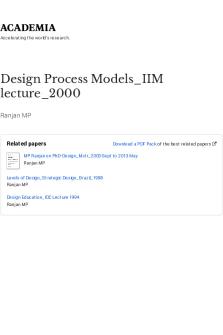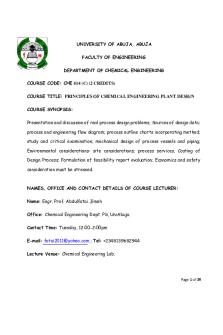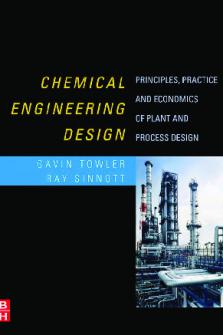Industrial Chemical Process Design by Erwin PDF

| Title | Industrial Chemical Process Design by Erwin |
|---|---|
| Author | Mohamd Abosoad |
| Pages | 646 |
| File Size | 25.8 MB |
| File Type | |
| Total Downloads | 424 |
| Total Views | 870 |
Summary
Chapter The Database 1 Nomenclature µ viscosity, cP °API gravity standard at 60°F cP viscosity, centipoise cSt viscosity, centistokes D density, lb/ft3 exp constant for exponential powers of e base value, 2.7183 MW molecular weight P system pressure, psia P pressure, psia PC critical pressure, psia...
Description
Accelerat ing t he world's research.
Industrial Chemical Process Design by Erwin Mohamd Abosoad
Related papers
Download a PDF Pack of t he best relat ed papers
Indust rial Chemical Process Design any chavarrio
STANDARD HANDBOOK OF ENVIRONMENTAL ENGINEERING Sept em Guo GAS T URBINE COMBUST ORS Sonu Kumar
Chapter
1 The Database
Nomenclature µ
viscosity, cP
°API
gravity standard at 60°F
cP
viscosity, centipoise
cSt
viscosity, centistokes
D
density, lb/ft3
exp
constant for exponential powers of e base value, 2.7183
MW
molecular weight
P
system pressure, psia
P
pressure, psia
PC
critical pressure, psia
PR
reduced pressure (P/PC), psia
°R
T + 460°F
SG 60/60
specific gravity referenced to pure water at 60°F
T
temperature, °F
TB
true boiling point, °F, of ASTM curve cut component or pure component
TC
critical temperature, °F or °R
TR
reduced temperature (T/TC), °R
V
molar volume, ft3/lb-mol
Z
gas compressibility factor
To meet this introductory challenge, we must first establish a database from which to launch our campaign. In doing so, consider the physical properties of liquids, gases, chemicals, and petroleum gener-
1
2
Chapter One
ally in making this application: viscosity, density, critical temperature, critical pressure, molecular weight, boiling point, acentric factor, and enthalpy. The great majority of the process engineer’s work is strictly with organic chemicals. This book is therefore directed toward this database of hydrocarbons (HCs). Only eight physical properties are presented here. Aren’t there many others? The answer is yes, but remember, this book is strictly directed toward that which is indeed practical. Many more properties can be listed, such as critical volume or surface tension. Our quest is to take these more practical types (the eight) as our database and thereby successfully achieve our goal, practical process engineering (PPE). At this point, it is important to present a disclaimer. Many notable engineers could claim the author is loco to think he can resolve all database needs with only the eight physical properties given or otherwise derived in this book. Let me quickly state that many other extended database resources are indeed referenced in this book for the user to pursue. Only in such retrieval of these and many other database resources, such as surface tension and solubility parameters, can PPE be applied. An example is that surface tension and solubility parameters must both be determined before the liquid/liquid software program given herein can be applied. This liquid-liquid extraction program (Chemcalc 16 [1]) is included as part of the PPE presentation. (See Chap. 7.) It is therefore important to keep in mind that many database references are so pointed to in this book—Perry’s, Maxwell’s, and the American Petroleum Institute (API) data book, to name a few. Again, why then present only these eight physical properties for our concern? The answer is that we can perform almost every PPE scenario by applying these eight physical properties, which are in most every data source and are readily available. Furthermore, an exhaustive listing would be a much greater book than the one you are reading, such as Lange’s Handbook of Chemistry and Physics [2]. Incidentally, Lange’s is a very good reference book which I highly endorse. Viscosity Liquid viscosity
The first of these properties is viscosity. All principal companies use mainly one of two viscosity units, centipoise (cP) or centistokes (cSt). Centipoise is the more popular. If your database presents only one, say cP, then you may quickly convert it to the other, cSt, by a simple equation: cP cSt = ᎏ sp gr
The Database
3
Specific gravity (sp gr) is simply the density referenced to water, sp gr of water being 1.0 at 60°F. This means that to get the specific gravity of a liquid, simply divide the density of the liquid at any subject temperature of the liquid by the density of water referenced to 60°F. With sp gr so defined, we can subsequently convert cP to cSt or cSt to cP by this simple equation. Thus the conversion is referenced to a temperature. Viscosity of any liquid is very dependent and varies with the slightest variance of the liquid temperature. Viscosity has been defined as the readiness of a fluid to flow when it is acted upon by an external force. The absolute viscosity, or centipoise, of a fluid is a measure of its resistance to internal deformation or shear. A classic example is molasses, a highly viscous fluid. Water is comparatively much less viscous. Gases are considerably less viscous than water. For the viscosity of most any HC, see Fig. A-3 in Crane Technical Paper No. 410 [3]. If your particular liquid is not given in this viscosity chart and you have only one viscosity reading, then locate this point and draw a curve of cP vs. temperature, °F, parallel to the other curves. This is a very useful technique. I have found it to be the more reliable, even when compared to today’s most expensive process simulation program. Furthermore, I find it to be a valuable check of suspected errors in laboratory viscosity tests. If you don’t have the Crane tech paper (available in any technical book store), then get one. You need it. I have found that most every process engineer I have met in my journeys to the four corners of the earth has one on their bookshelf, and it always looks very used. The following equations compose a good quick method that I find reasonably close for most hydrocarbons for API gravity basis. Note that the term API refers to the American Petroleum Institute gravity method [4]. These viscosity equations are derived using numerous actual sample points. These samples ranged from 10 to 40° API crude oils and products. I find the following equations, Eqs. (1.1) to (1.4), to be in agreement with Sec. 9 of Maxwell’s Data Book on Hydrocarbons [5]. How to determine any HC liquid viscosity.
Viscosity, cP, for 10°API oil: µ = exp (18.919 − 0.1322T + 2.431e-04 T 2)
(1.1)
Viscosity, cP, for 20°API oil: µ = exp (9.21 − 0.0469T + 3.167e-05 T 2)
(1.2)
Viscosity, cP, for 30°API oil: µ = exp (5.804 − 0.02983T + 1.2485e-05 T 2)
(1.3)
4
Chapter One
Viscosity, cP, for 40°API oil: µ = exp (3.518 − 0.01591T − 1.734e-05 T 2) where
(1.4)
µ = viscosity, cP T = temperature, °F exp = constant of natural log base, 2.7183, which is raised to the power in parentheses
You can interpolate linearly for any API oil value between these equations and with extrapolation outside to 90°API. Temperature coverage is good from 50 to 300°F. If outside of this range, use the American Society for Testing and Materials (ASTM) Standard Viscosity-Temperature Charts for Liquid Petroleum Products (ASTM D-341 [6]). The values derived by Eqs. (1.1) to (1.4) are found to be within a small percentage of error by the ASTM D-341 method. It is good practice to always obtain at least one lab viscosity reading. With this reading, draw a relative parallel curve to the curve family in ASTM D-341. The popular Crane Technical Paper No. 410 reproduces this ASTM chart as Fig. B-6. If two viscosity points with associated temperature are known, then use the Crane log plot figure, also an API given method (ASTM D-341), to determine most any liquid hydrocarbon viscosity. Gas viscosity How to determine any HC gas viscosity. For most any HC gas viscosity,
use Fig. 1.1 (Fig. A-5 in Crane Technical Paper No. 410). The constant Sg
Figure 1.1 Hydrocarbon gas viscosity. (Adapted from Crane Technical Paper No. 410, Fig. A-5. Reproduced by courtesy of the Crane Company [3].)
The Database
5
is simply the molecular weight (MW) of the gas divided by the MW of air, 29. Note carefully, however, that Fig. 1.1 is strictly limited to atmospheric pressure. The gas atmospheric reading from this figure, or from other resources such as the API Technical Data Book [7], is deemed reasonably accurate for pressures up to, say, 400 psig. In addition to the API Technical Data Book and Gas Processors Suppliers Association (GPSA) methods [8], a new gas viscosity method is presented herein that may be used for a computer program application or a hand-calculation method: For 15 MW gas: µ = 0.0112 + 1.8e-05 T
(1.5)
µ = 0.00923 + 1.767e-05 T
(1.6)
µ = 0.00773 + 1.467e-05 T
(1.7)
µ = 0.0057 + 0.00001 T
(1.8)
For 25 MW gas:
For 50 MW gas:
For 100 MW gas:
where
µ = viscosity, cP T = temperature, °F
Equations (1.5) to (1.8) are good from vacuum up to 500 psia pressure and temperatures of −100 to 1000°F. Pressures at or above 500 psia should have corrections added from Eqs. (1.9), (1.10), or (1.11). Eqs. (1.5) to (1.8) are reasonably accurate to within 3% of the API data and are good for a pressure range from atmospheric to approximately 400 psig. You may make linear interpolations between temperaturecalculated points for reasonably accurate gas viscosity readings at atmospheric pressures. Many will say (even notable process engineers, regrettably) that higher pressures (above 400 psig) will have little effect on the gas viscosity, and that although the viscosity does change, the change is not significant. Trouble here! In many unit operations, such as high-pressure (≤500 psig) separators and fractionators, the gas viscosity variance with pressure is most critical. I have found this gas viscosity variance to be significant in crude oil–production gas separators, even as low as 300 psig. You may make corrections with the following additional equations. These corrections are to be added to the atmo-
The Database 6
Chapter One
spheric gas viscosity reading in Fig. 1.1 or the gas viscosity Eqs. (1.5) to (1.8) [8]. Add the following calculated viscosity correction to Fig. 1.1 or Eqs. (1.5) to (1.8): Gas viscosity correction for 100°F system: µc = −1.8333e-05 + 1.2217e-06 P + 1.737e-09 P2 − 2.1407e-13 P3
(1.9)
Gas viscosity correction for 400°F system: µc = −1.281e-05 + 1.5484e-06 P + 2.249e-10 P2 − 6.097e-14 P3
(1.10)
Gas viscosity correction for 800°F system: µc = −1.6993e-05 + 1.1596e-06 P + 2.513e-10 P2
(1.11)
where µc = viscosity increment, cP, to be added to Fig. 1.1 values or to Eqs. (1.5) to (1.8) P = system pressure, psia You may again interpolate between equation viscosity values for inbetween pressures. Whenever possible, and for critical design issues, these variables should be supported by actual laboratory data findings. In applying these equations and Fig. 1.1, please note that you are applying a proven method that has been used over several decades as reliable data. Henceforth, whenever you need to know a gas viscosity, you’ll know how to derive it by simply applying this method. You may also use these equations in a computer for easy and quick reference. See Chap. 9 for computer programming in Visual Basic. Applying programs such as these is simple and gives reliable, quick answers. Now somebody may say here, why should a high-pressure (450 psig and greater) gas viscosity be so important, and, by all means, what is practical about finding such data? Well, this certainly deserves an answer, so please see Chap. 4, page 153, for the method of calculating gas and liquid vessel diameters. Note that Eq. (4.3) in the Vessize.bas program has an equation divided by the gas viscosity. A change of only 10% in the gas viscosity value greatly changes the vessel’s required diameter, as may be seen simply by running this vessel-sizing program. Considerable emphasis is therefore placed on these database calculations. They do count. Take my suggestion that you prepare for a good understanding of this database and how to get it.
Downloaded from Digital Engineering Library @ McGraw-Hill (www.digitalengineeringlibrary.com) Copyright © 2004 The McGraw-Hill Companies. All rights reserved.
The Database The Database
7
Density Liquid density
Liquid density for most HCs may be found in Fig. 1.2. This chart is a general reference and may be used for general applications that are not critical for discrete defined components. In short, if you don’t have a better way of getting liquid density, you can get it from Fig. 1.2. Note that you need to have a standard reference of API gravity reading to predict the HC liquid density at any temperature. Generally, you should have such a reading given as the API gravity at 60°F on the crude oil assay or the petroleum product cut lab analysis. If you don’t have any of these basic items, you must have something on which to base your component data, such as a pure component analysis of the mixture. If not, then please review the basis of your given data, as it is most evident that you are missing critical data that must be made available by obtaining new lab analysis or new data containing API gravities. It is important here to briefly discuss specific gravity and API gravity of liquids. First, the API gravity is always referenced to one temperature, 60°F, and to water, which has a density of 62.4 lb/ft3 at this temperature. Any API reading of a HC is therefore always referenced to 60°F temperature and to water at 60°F. This gravity is always noted as SG 60/60, meaning it is the value interchangeable with the referenced HC’s API value per the following equations:
Specific gravity of petroleum fractions. (Plotted from data in J. B. Maxwell, “Crude Oil Density Curves,” Data Book on Hydrocarbons, D. Van Nostrand, Princeton, NJ, 1957, pp. 136–154.)
Figure 1.2
Downloaded from Digital Engineering Library @ McGraw-Hill (www.digitalengineeringlibrary.com) Copyright © 2004 The McGraw-Hill Companies. All rights reserved.
The Database 8
Chapter One
141.5 °API = ᎏᎏ − 131.5 SG 60/60
(1.12)
141.5 SG 60/60 = ᎏᎏ 131.5 + °API
(1.13)
Thus, having the API value given, we may find the subject HC gravity at any temperature by applying Fig. 1.2. Keep in mind that liquid gravities are always calculated by dividing the known density of the liquid at a certain temperature by water at 60°F or 62.4 lb/ft3. I also find the following equation to be a help (again, in general) in deriving a liquid density. Liquid density estimation
MW D = ᎏᎏᎏᎏᎏᎏ (10.731 ∗ TC/PC) ∗ 0.260^[1.0 + (1.0 − TR)^0.2857] where
(1.14)
D = liquid density, lb/ft3 MW = molecular weight TC = critical temperature, degree Rankine (°R) PC = critical pressure, psia TR = reduced temperature ratio = T/TC T = system temperature, °R, below the critical point
Let’s now run a check calculation to see how accurate this equation is. n-Octane
MW = 114.23 PC = 360.6 psia TC = 1024°R SG 60/60 = 0.707 Trial at 240∞F, Liquid n-Octane
From Eq. (1.14): MW D = ᎏᎏᎏᎏᎏᎏ (10.731 ∗ TC/PC) ∗ 0.260^[1.0 + (1.0 − TR)^0.2857] D = 38.00 lb/ft3 From Maxwell, page 140 [9]: or
n-octane density at 240°F = 0.625 SG 0.625 ∗ 62.4 = 39.00 lb/ft3
Downloaded from Digital Engineering Library @ McGraw-Hill (www.digitalengineeringlibrary.com) Copyright © 2004 The McGraw-Hill Companies. All rights reserved.
The Database The Database
9
From Fig. 1.2: 141.5 °API @ 0.707 SG 60/60 = ᎏ − 131.5 = 68.64°API 0.707 At this API curve, read 0.615 gravity (horizontal line from intersect point) at 240°F, or 0.615 ∗ 62.4 = 38.38 lb/ft3 Summary of Eq. (1.14) Check
39.0 − 38.0 Deviation from Maxwell [9] = ᎏᎏ ∗ 100 = 2.5% error 39 38.38 − 38.00 Deviation from Nelson [10] = ᎏᎏ ∗ 100 = 1.0% error 38.38 From the preceding check of n-octane liquid density, we have established that Eq. (1.14) is a reasonable source for calculating n-octane liquid density. Both Nelson and Maxwell data points could also have as much error, 1 to 3%. The conclusion therefore is that Eq. (1.14) is a reasonable and reliable method for liquid density calculations. You may desire to investigate other known liquid densities having the same known variables, TC, PC, and MW. You are encouraged to do so. Gas density
While the density of any liquid is easily derived and calculated, the same is not true for gas. Gas, unlike liquid, is a compressible substance and varies greatly with pressure as well as temperature. At low pressures, say below 50 psia, and at low temperature, say below 100°F, the ideal gas equation of state holds true as the following equation: MW ∗ P D = ᎏᎏ 10.73 ∗ (460 + T) where
(1.15)
D = gas density, lb/ft3 MW = gas molecular weight P = system pressure, psia T = °F
For this low-temperature and -pressure range, any gas density may quickly be calculated. Error here is less than 3% in every case checked. What about higher temperatures and pressures? Aren’t these higher values where all concerns rest? Yes, most all process unit operations, such as fractionation, separation, absorption stripping, chemical reaction, and heat exchange generate and apply these higher-temperature Downloaded from Digital Engineering Library @ McGraw-Hill (www.digitalengineeringlibrary.com) Copyright © 2004 The McGraw-Hill Companies. All rights reserved.
The Database 10
Chapter One
and -pressure conditions. Then how do we manage this deviation from the ideal gas equation? The answer is to insert the gas compressibility factor Z. Add gas compressibility Z to Eq. (1.15): MW ∗ P D = ᎏᎏᎏ Z ∗ [10.73 ∗ (460 + T)]
(1.16)
where Z = gas compressibility factor The question now is how do you derive, calculate, or find the correct Z factor at any temperature and pressure? The first answer is, of course, get yourself a good, commercially proven, process-simulation software program. As these programs cost too much, however, for anyone who works for a living, you must seek other resources. This is a core reason why this book has been written. Look at the practical side. After all, who has $25,000 pocket change to throw out for such candor? It is therefore my sincere pleasure to present to you, as the recipient of the software accompanying this book, the following two computer programs. Z.mak. This is a program derived from data established in the API
Technical Data Book, procedure 6B1.1 [11]. Please note that Z.mak, although similar, is an independent and separate program from this API procedure. A program listing as in the Z.mak executable file is shown in Table 1.1. Inside the phase envelope, the compressibility factor calculated in Z.mak is more accurate than that calculated in RK.mak (the Redlich-Kwong equation of state). RK.mak is given and discussed later. The Z.mak program may be used with reasonable accuracy, as can the API procedure 6B1.1. Z.mak accuracies range from 1 to 3% error. Most case accuracies are 1% error or less. One caution, however, is necessary, and this is regarding Z values in or near the critical region of the phase envelope. Important Note: Use Z.mak when at less than the critical pressure and/or in the phase envelope. The acentric factor is also calculated from the input TC, PC, and boiling point. The acentric factor is used in the Z factor derivation. See line 110 in Table 1.1. Please note that the Z factor so calculated here is to be applied in ...
Similar Free PDFs

Chemical Process Design and Simulation
- 418 Pages

Process Design
- 6 Pages

CHEMICAL PROCESS ENGINEERING
- 277 Pages

ERWIN KREYSZIG
- 1,246 Pages

chemical engineering design project
- 383 Pages
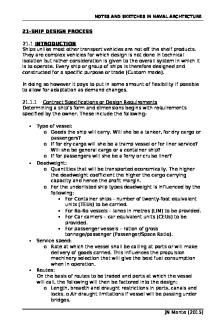
-Ship Design Process
- 1 Pages
Popular Institutions
- Tinajero National High School - Annex
- Politeknik Caltex Riau
- Yokohama City University
- SGT University
- University of Al-Qadisiyah
- Divine Word College of Vigan
- Techniek College Rotterdam
- Universidade de Santiago
- Universiti Teknologi MARA Cawangan Johor Kampus Pasir Gudang
- Poltekkes Kemenkes Yogyakarta
- Baguio City National High School
- Colegio san marcos
- preparatoria uno
- Centro de Bachillerato Tecnológico Industrial y de Servicios No. 107
- Dalian Maritime University
- Quang Trung Secondary School
- Colegio Tecnológico en Informática
- Corporación Regional de Educación Superior
- Grupo CEDVA
- Dar Al Uloom University
- Centro de Estudios Preuniversitarios de la Universidad Nacional de Ingeniería
- 上智大学
- Aakash International School, Nuna Majara
- San Felipe Neri Catholic School
- Kang Chiao International School - New Taipei City
- Misamis Occidental National High School
- Institución Educativa Escuela Normal Juan Ladrilleros
- Kolehiyo ng Pantukan
- Batanes State College
- Instituto Continental
- Sekolah Menengah Kejuruan Kesehatan Kaltara (Tarakan)
- Colegio de La Inmaculada Concepcion - Cebu

